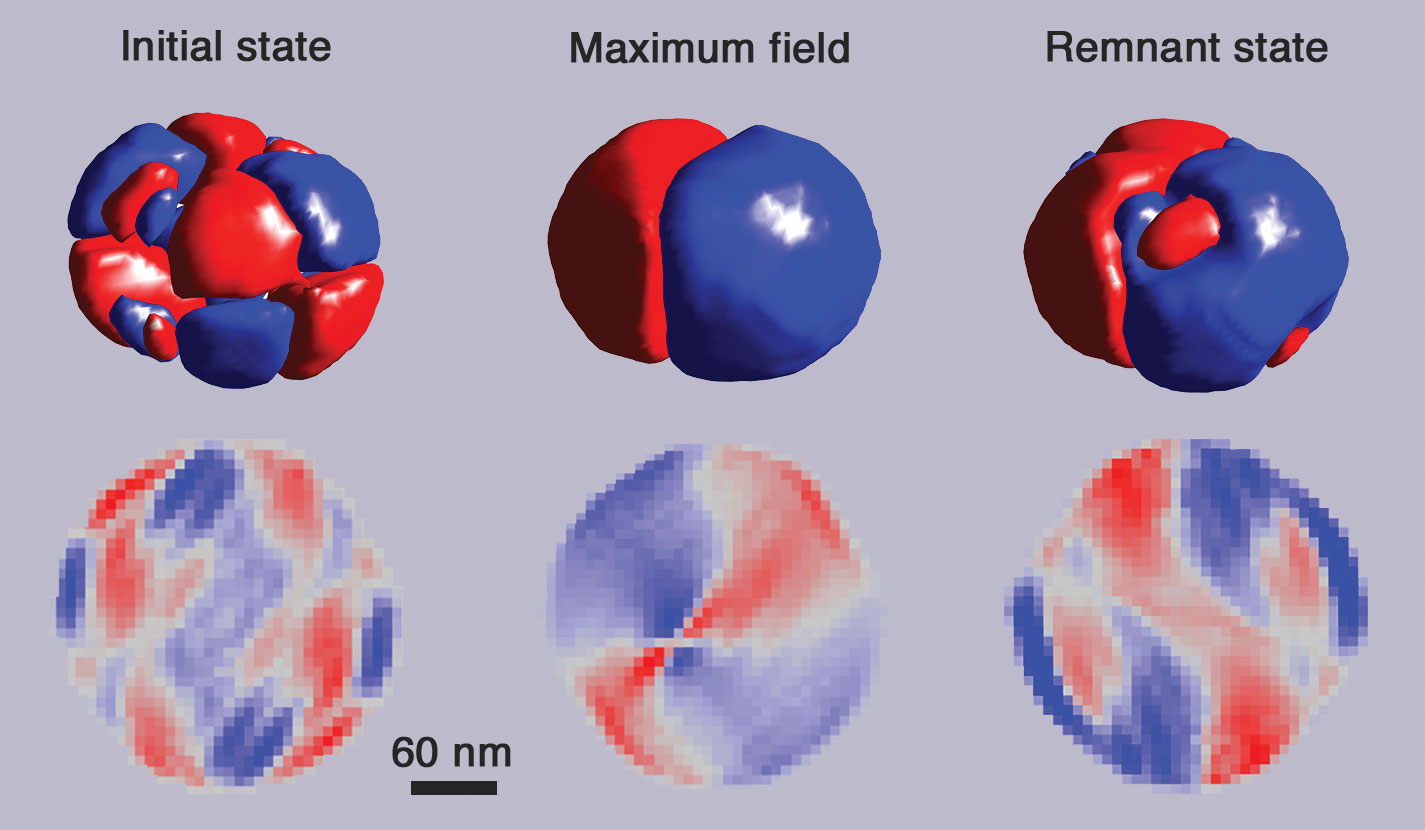Three-dimensional rendering of a nanoparticle’s structural transformation
A team of researchers from New Mexico State University’s Department of Physics have, for the first time, created a three-dimensional rendering of a microscopic nanoparticle’s structural transformation induced and controlled by an external electrical source. Topological defects are stable configurations of matter formed during phase transitions that in general may dramatically alter material properties. But until recently it was impossible to non-destructively probe 3D topological structures embedded in ferroelectric nanoparticles while applying external perturbations to monitor their behavior during structural phase transitions.

A depiction of a ferroelectric nanoparticle undergoing phase transition with the outside influence of an electrical field.
The team, led by Edwin Fohtung, assistant professor at NMSU, performed the experiments with Barium Titanate (BTO) nanoparticles. Using an external electrical field the scientists were able to observe in three dimensions a ferroelectric vortex rod of 30 nanometers in width—a billion times smaller than a human hair.
This discovery can provide scientists with new methods in designing next-generation quantum computing components. For example, nanoparticles with such vortex-phases may increase computer RAM storage capacity by 10,000-fold.
Fohtung and his team’s work is supported by the Los Alamos National Laboratory. The team used X-rays from the Advanced Photon Source at Argonne National Laboratory in Lemont, Illinois, and the Bragg X ray Coherent Diffractive Imaging (BCDI) technique to probe a single particle of BTO, with 18 nanometers resolution in 3D.
BCDI can be used to reconstruct the density of the sample in phases. This reconstruction technique is called phase-retrieval. This technique developed by Fohtung and his team at NMSU is applicable to other areas, such as biology and regenerative medicine, where scientists and medical doctors are studying how stem cells and cancer cells and other micro-organisms collectively evolve in their environment, undergoing transitions in a similar way.
The applications in biomedicine are currently being pursued by Dmitry Karpov, an NMSU affiliate and a visiting research fellow from the National Research Tomsk Polytechnic University (Tomsk, Russia).
The results have been published in the peer-reviewed scientific journal “Nature Communications.”
- Nature Communications 8, Article number: 280(2017)
- doi:10.1038/s41467-017-00318-9
- http://www.nature.com/articles/s41467-017-00318-9
Read the full NMSU news release from 09/13/2017.
